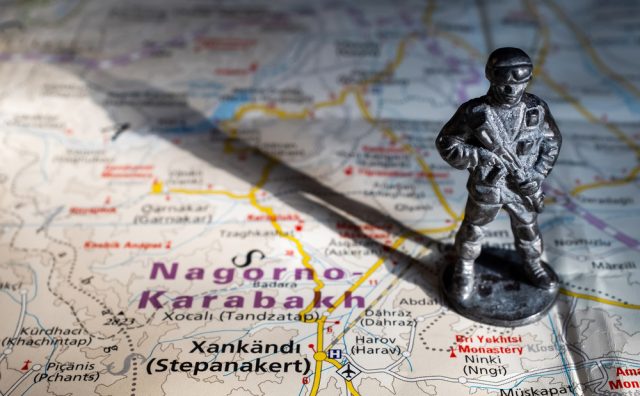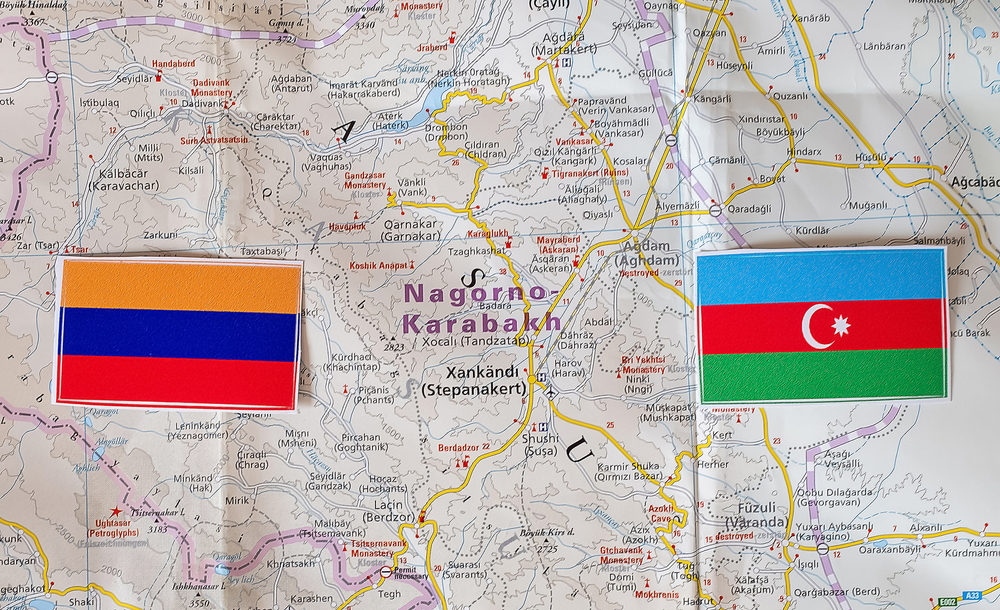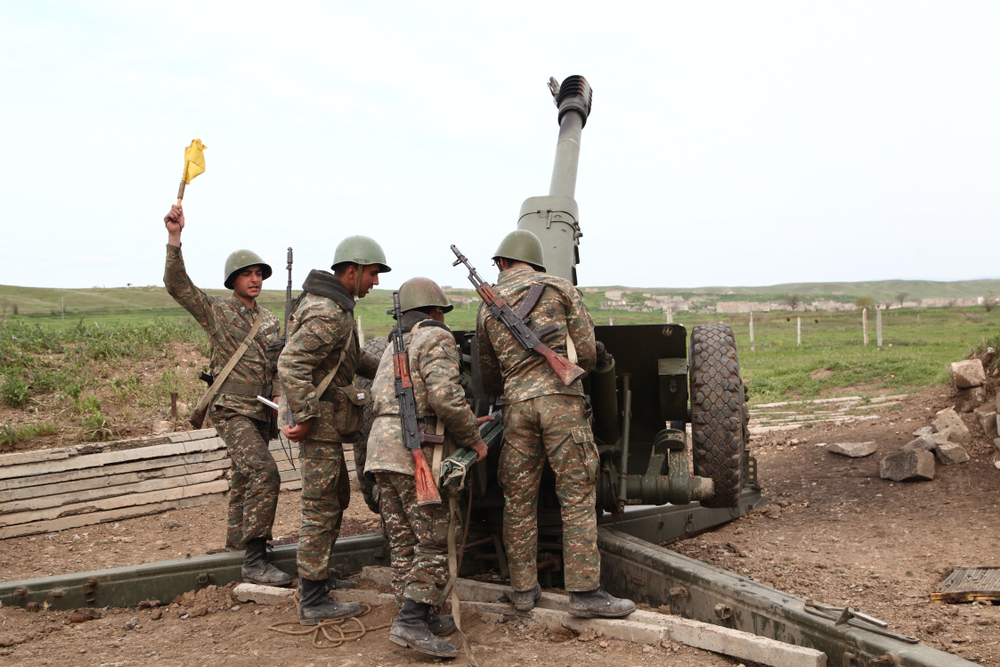
The outcome and the long conflict between Armenia and Azerbaijan
In the current global scenario, it is clear that international tensions are on the rise, and the news is filled with reports of conflicts and disputes. Two of the most talked-about issues are the Russian military intervention in Ukraine and the Israeli response to Hamas attacks. However, there is another long-standing conflict that has been going on for over thirty years in the South Caucasus region of Europe. The conflict revolves around the Nagorno-Karabakh region, which both Azerbaijan and Armenia claim as their own. Despite numerous attempts at resolution, the conflict remains unresolved, leading to a humanitarian crisis and instability in the region.
Nagorno-Karabakh is a region located in the south of the Lesser Caucasus and is a crucial part of the region’s complex history. Under Russian and Soviet rule, the area became known as Nagorno-Karabakh, which is Russian for “mountainous Karabakh.” However, the name “Karabakh” itself, of Persian and Turkic origin, had previously been used to refer to the plains between the Kura and Aras rivers and the adjacent mountainous territory. In ancient times, the Nagorno-Karabakh region, between the Kura and Aras rivers, was inhabited by the Kura-Araxes, a people little documented by historians due to the scarcity of sources. However, the oldest mention of the territory dates back to the inscriptions of Sardur II, king of Urartu (763-734 BC), where the region is called Urtekhini.
Returning to present-day events, since January 1, 2024, the situation has become even more complicated. The parallel state of the Republic of Artsakh, which was formed by Armenians in the Nagorno-Karabakh region to proclaim their independence from Azerbaijan, has ceased to exist. This has led to a fresh wave of tensions in the region, with both sides accusing each other of violating the ceasefire agreement that was signed in 2020. The situation is extremely delicate, and any misstep could lead to a full-scale war between the two countries.
Nagorno-Karabakh is a region that has long been a point of contention between Armenia and Azerbaijan. The region is located in Azerbaijan but has a significant Armenian majority. In fact, in the early 2000s, Armenians made up about 94% of the population. Nagorno-Karabakh has been under the control of Azerbaijan since the 1920s when Stalin gave the region to the Soviet Socialist Republic. At the same time, he also gave the area of Nakhchivan, which has an Armenian majority, to the Soviet Socialist Republic, providing them with an outlet on the Caspian Sea.
However, with the dissolution of the Soviet Union, the issue of Nagorno-Karabakh was never fully resolved, leading to ongoing conflict between the Armenians and Azerbaijanis. Both sides have engaged in military operations to try to gain control of the territory. Nagorno-Karabakh is a predominantly mountainous and sparsely populated area, with just over 140,000 inhabitants and a population density of 32 residents per square kilometer.
 This area, which is an enclave within Azerbaijan, is mostly populated by ethnic Armenians, and controlling it is vital for Armenia to regain sovereignty over its territory. On the other hand, Azerbaijan claims that the region is an integral part of its territory and, if lost, would mean risking losing control of the Nakhchivan Autonomous Republic, which is of greater importance due to its population of almost half a million and abundant natural resources, including cotton and tobacco agriculture, and essential minerals such as lead.
This area, which is an enclave within Azerbaijan, is mostly populated by ethnic Armenians, and controlling it is vital for Armenia to regain sovereignty over its territory. On the other hand, Azerbaijan claims that the region is an integral part of its territory and, if lost, would mean risking losing control of the Nakhchivan Autonomous Republic, which is of greater importance due to its population of almost half a million and abundant natural resources, including cotton and tobacco agriculture, and essential minerals such as lead.
The conflict is further complicated by the involvement of external powers, with Russia often playing a moderating role to prevent the escalation of the conflict. Russia has an interest in avoiding conflicts in its area of influence and is close to Iran, another country that is not aligned with the West. The ongoing conflict has had a significant impact on the region, causing loss of life and displacement of populations, and a resolution to the conflict remains elusive despite numerous attempts at peace negotiations.
The ongoing conflict between Azerbaijan and Armenia is a complex issue that involves multiple factors. One of the key factors is the alliance games that are being played behind the scenes of this conflict. Azerbaijan is being supported economically and militarily by Turkey, which is a member of NATO. On the other hand, Armenia is being armed by Russia. This has greatly complicated the situation and added to the intensity of the conflict.
The involvement of other countries in this conflict is not insignificant either. Israel is known to support the Azerbaijani cause, while Iran supports the Armenian one. This support is mainly driven by anti-Iranian and anti-American sentiments, respectively. This complex web of alliances has added to the complexity of the situation and made it harder to resolve.
 The clashes that occurred in the autumn of 2020 were considered to be a full-blown war, resulting in over 6,000 deaths among the armed forces and over 150 civilian losses. In addition, the conflict has led to the displacement of 100,000 Armenians and 40,000 Azeris. These numbers are alarming and have had a significant impact on the population in the region, causing widespread fear, anxiety, and trauma. The conflict shows no signs of ending soon, and its impact on the people in the region is likely to be felt for a long time to come.
The clashes that occurred in the autumn of 2020 were considered to be a full-blown war, resulting in over 6,000 deaths among the armed forces and over 150 civilian losses. In addition, the conflict has led to the displacement of 100,000 Armenians and 40,000 Azeris. These numbers are alarming and have had a significant impact on the population in the region, causing widespread fear, anxiety, and trauma. The conflict shows no signs of ending soon, and its impact on the people in the region is likely to be felt for a long time to come.
In September 2023, Azerbaijan launched an offensive, which lasted just a day and ended with a large Turkish-Azeri victory. This led to the definitive exodus of Armenians, making Nagorno-Karabakh today a kind of ghost region.
This series of clashes could easily be included in the long struggle between the Turks and the Armenians, which started with the genocide of the Armenian population perpetrated by the Ottoman Empire between 1915 and 1916 causing, according to the times, over one and a half million deaths. In that case, the sultan of the time Muhammad V issued a law that provided for the deportation of the Armenians, all in a climate of both religious fanaticism (the Armenians are among the few Christian populations in the area) and nationalism, pushed by the Young Turks among whom Atatürk will emerge and give life to present-day Turkey.
From that dramatic season, Armenia will obviously become a visceral enemy of Turkey, finding in Russia an excellent ally interested in hitting Erdogan and Turkey in an anti-Atlantic way.
To date, in the armed conflict between Armenia and Azerbaijan over Nagorno-Karabakh, the Armenian forces have suffered several resounding defeats. As a result, Azerbaijan now retains control of two regions, which has had serious economic repercussions. Azerbaijan’s GDP per capita is $17,500, thanks to its oil extraction activities in the Caspian Sea. This has given the country a significant advantage over Armenia, whose GDP per capita is only $9,500, indicating a very poor and complex economy. Moreover, Armenia has had to cope with the displacement of an additional 100,000 citizens who were exiled from Nagorno-Karabakh, adding to the already challenging situation. The country has been struggling to provide basic amenities to its people, including food, shelter, and healthcare. The conflict has resulted in significant economic and social challenges for both countries. However, the situation in Armenia is particularly dire, with the country facing a long road to recovery.
The situation at hand is incredibly intricate, with multiple factors at play. It is held tightly within the grasp of international power games, where various nations exert their influence and compete for control. Additionally, the people involved are facing numerous historical and societal challenges that have only exacerbated their current state of crisis.



 Subscribe
Subscribe